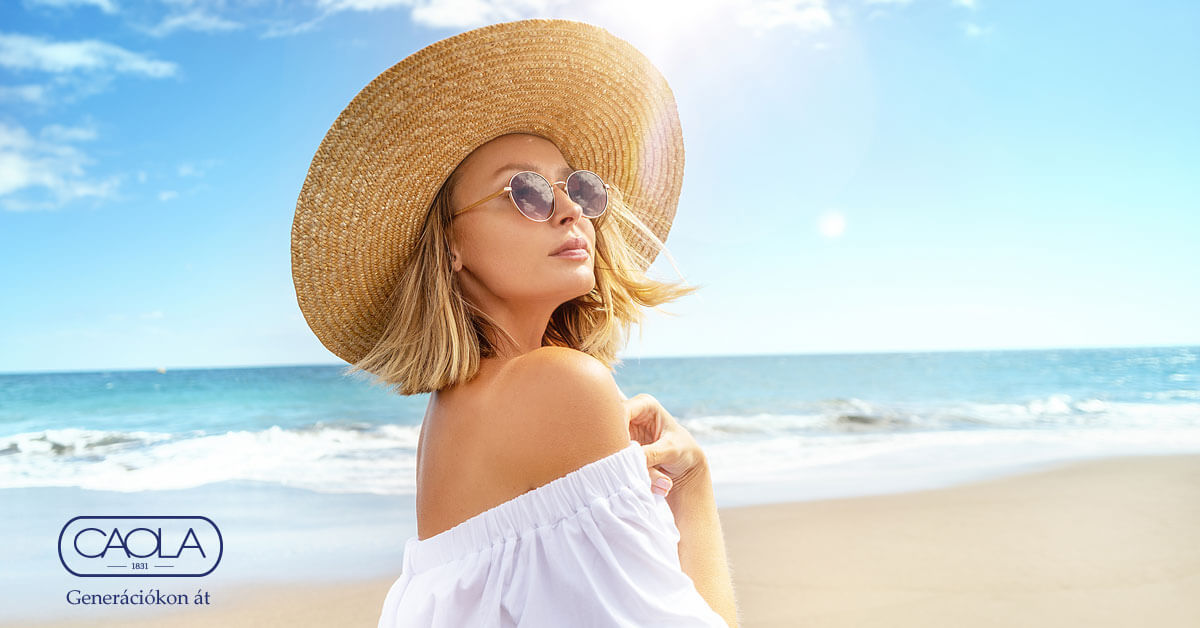We help you know what to look out for before buying sunscreen!
Summer is almost here. Even though the closures are not yet fully lifted, we will probably have a chance to get through the hot days on the beach, by the lakeside, outdoors. Sunscreen is recommended at all times of the year when you are exposed to strong UV rays, but it is even more recommended in summer when there are more sunny hours, stronger sunshine and more time outdoors. Be sure to read the product label when choosing the right sunscreen, sunscreen oil or sunscreen spray. Sunscreens are subject to strict rules, which should ideally be stated on the label.
It's not just burns that we need to be aware of With extra strong sunshine comes the risk of sunburn, which everyone should avoid. The best way to prevent sunburn is to use sunscreen sunscreens, so it's important to make sure your skin is properly protected by the sunscreen you choose. Sunburn can be painful, and in extreme conditions can cause skin irritation, peeling and even blistering. But it can also cause more serious damage. Excessive sun exposure and sunburn can lead to skin cancer. Unfortunately, skin cancer is one of the most common cancers in the world. It affects more men than women and is typically more common in people over 50. Skin cancer can occur anywhere on the body.
The most common symptoms to look out for are:
- A spot on your skin, changes in the shape, colour, size and edges of your mole.
- Irregular colour on the mole, irregular edges or blurred patterns.
- New birthmark formation.
- A mole on the skin that bleeds continuously.
Sunscreen, sunscreen selection
What type of skin do we have? Before choosing a sunscreen, we usually already know roughly whether we have lighter or slightly darker skin of the 6 skin types. Are we prone to sunburn, or are we one of the lucky ones who can last longer in the sun without any serious sunburn or blushing. If we know our skin, we know that for whiter skin types, it's best to choose sunscreens with a high SPF 50, while for tanner skin, we can try a medium SPF 30. As well as your skin type, there are two other things to look at carefully:
Does it protect against UVA and UVB rays? What is the factor number (SPF)?
UVA and UVB rays
The sun emits two wavelengths of light that penetrate the earth's atmosphere: ultraviolet A and ultraviolet B. Sunscreens are classified according to the level of protection they provide against UVA and UVB. Sunscreens with broad spectrum UVB and UVA protection are the most recommended. Since UV rays damage the skin in different ways, a sunscreen that only protects against one type or the other will not provide full protection. Therefore, it is no longer possible to market a sunscreen product that does not protect against both. UVA rays have a longer wavelength than lower energy rays. They penetrate deeper into the skin, damaging collagen and leading to wrinkles and skin ageing. UVB rays are shorter wavelengths with higher energy. A rule in the European Union states that if a product does not carry a label for UVA, it must have a minimum SPF of one third of the SPF value. Every time our skin is burned by the sun, it can cause mutations in cells, which can lead to malignant tumours. That's why it's so important to make sure you're protected against both forms of UV radiation.
What about the sun protection factor (SPF)?
The SPF is the amount of time you can be in the sun without getting sunburned when using a product. For average, non-extreme UV exposure, an adult can spend about 20 minutes in the sun without getting sunburnt. Multiply this by the factor number on the sunscreen and you get an approximate time of protection. If you're one of those people who think that sunscreens with a factor of 15 are enough for a full day outdoors, at the beach or lakeside, it's time to reconsider. SPF15 is the lowest factor number recommended by doctors, so it offers the least amount of protection. Aim for a sunscreen with a factor of 30 or higher. The SPF number is the level of protection a sunscreen provides against UVB rays. Higher SPF numbers mean more protection, but the higher you go, the smaller the difference. SPF 15 sunscreens filter out about 93% of UVB rays, while SPF 30 sunscreens filter out about 97%, SPF 50 sunscreens filter out about 98% and SPF 100 sunscreens filter out about 99%.* Caola's range also includes sunscreens with SPF 30 and SPF 50 and sunscreen sprays with SPF 50.
Sunscreen for children
Children's skin is particularly sensitive, so it is advisable to use products with the highest possible factor. It is particularly beneficial to choose sunscreens specifically designed for children, as these products do not contain allergenic substances, ingredients that can irritate the thin and soft skin of little ones. That's why at Caola we've developed a children's sunscreen spray with 50 factor, ideal for children.
Waterproof sunscreen?
No sunscreen is 100% waterproof or sweatproof, but under a rigorous approval process, if it meets a set standard, it can be labelled as waterproof or extra waterproof. For best results, apply at least every 2 hours and more often if you swim or sweat heavily. Sunscreen tends to rub off when you wipe yourself dry, so you'll need to apply more. If you're in the sun, it's worth protecting yourself in ways other than using sunscreen. Wear clothing and a wide-brimmed hat to protect as much skin as possible. Protect your eyes with sunglasses that block at least 99 percent of UV light. Avoid direct sunlight, especially between 10am and 4pm when UV rays are strongest.
*source: patient.info; cancer.org, aad.org
